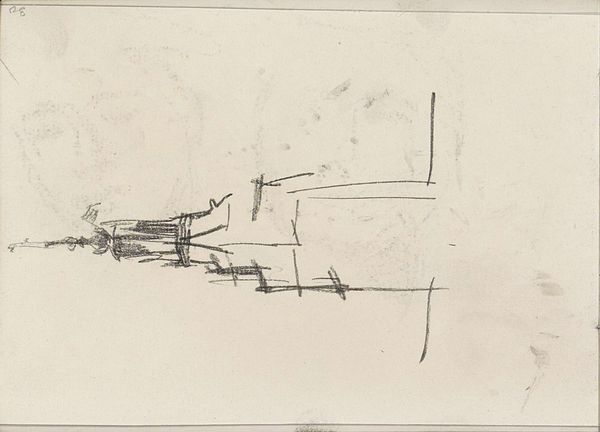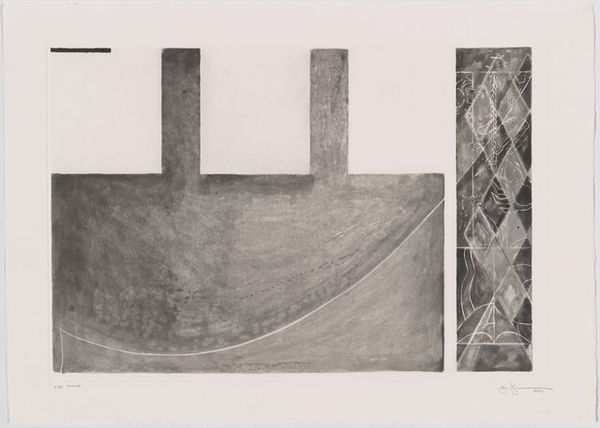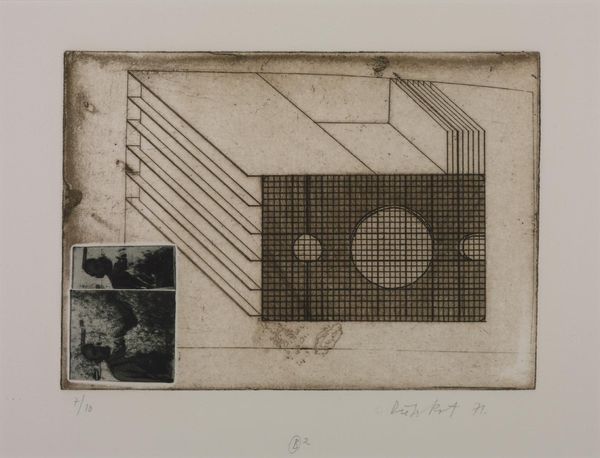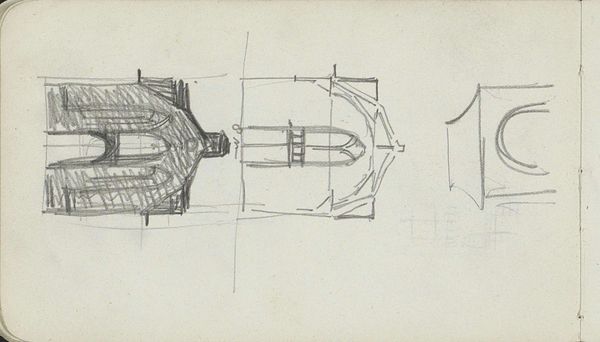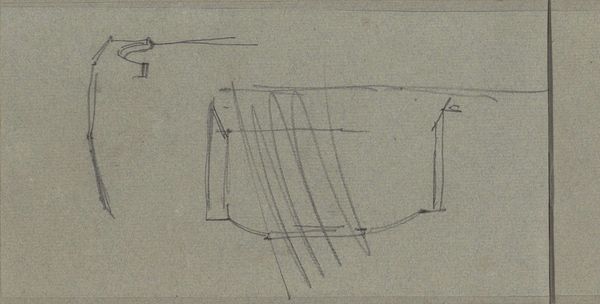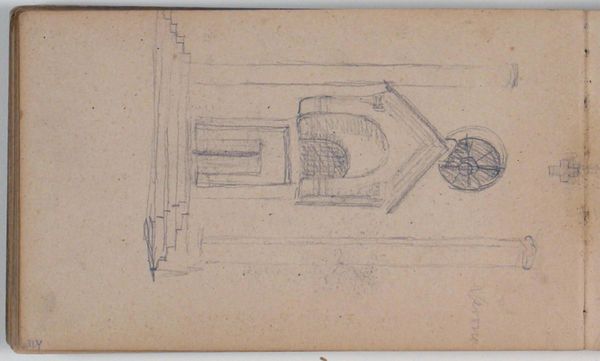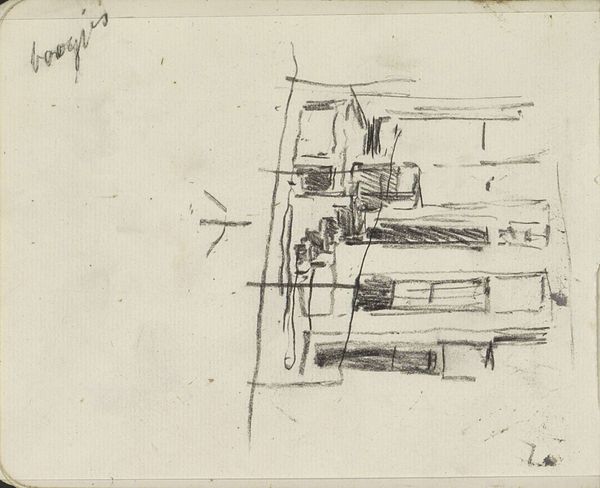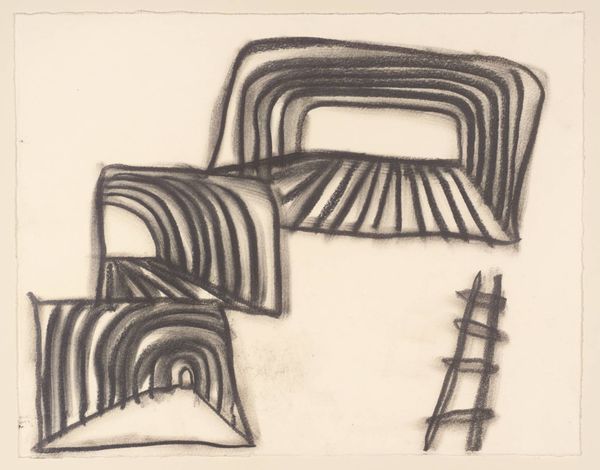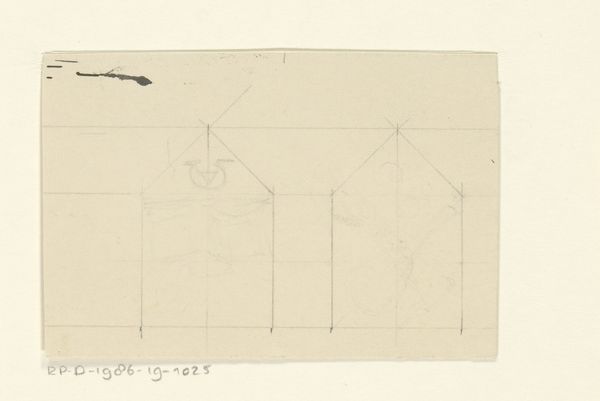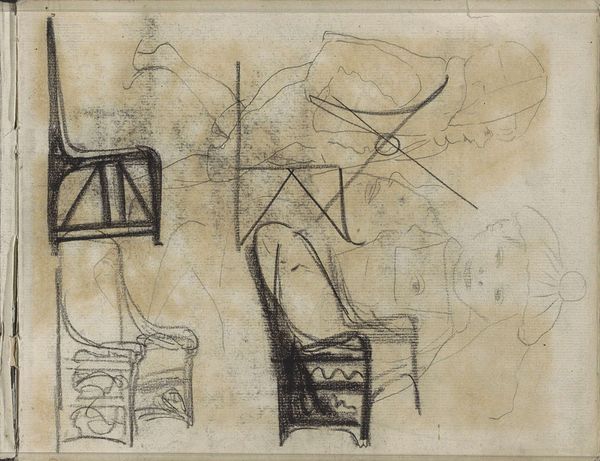
print, etching
# print
#
etching
#
landscape
#
etching
#
geometric
#
abstraction
#
modernism
Dimensions: plate: 11.3 x 45.2 cm (4 7/16 x 17 13/16 in.) sheet: 21.7 x 57 cm (8 9/16 x 22 7/16 in.)
Copyright: National Gallery of Art: CC0 1.0
Curator: Dorothy Dehner's "River Landscape," etched in 1958, presents a fascinating puzzle. At first glance, the abstraction almost obscures the landscape, doesn't it? Editor: Absolutely. It evokes a sense of something fragmented, almost like peering through a shattered mirror. I wonder, what kind of river is being represented? Curator: Perhaps less a specific place and more a feeling? Dehner plays with geometric shapes – triangles, rectangles – and lines that suggest forms in nature. There's a kind of constructed reality. Do these shapes carry particular significance? Editor: Well, triangles often represent aspiration and upward movement, the sacred reaching toward the heavens. Rectangles, solidity, stability, the earthly. Perhaps the artist tries to resolve the natural and constructed spaces using these forms? Curator: The central geometric form dominates – is it a building, a dam? It seems like a complex structure, perhaps representative of humanity's intervention within a landscape? I think there's tension in that interaction. Editor: Yes! Dams, weirs, and docks. Humans modify natural waterways, altering both animal and vegetal environments. Water deities are frequently depicted on architecture worldwide. So what can Dehner say to us, if water can represent the life force, and the geometric shows progress or restriction? Curator: That interpretation is very revealing; Dehner certainly possessed the awareness to make a clear statement using basic symbolic devices! Ultimately, abstraction allows for such breadth of interpretation, I think she liked the viewers filling the spaces in the landscape that are "missing" to us, bringing their own narratives. Editor: It's as if the familiar is disassembled, analyzed, then offered to us reconfigured into an alphabet. It gives you a push toward reconstructing, toward decoding visual signs. The fun is in seeing the potential of natural spaces alongside those imposed and considered in progress or harmony with our evolution! Curator: So Dehner invites us not just to observe but to participate in the landscape itself. It makes me appreciate how our perspective always shapes our relationship with the world. Editor: An elegant call for viewers to find harmony by reconciling humanity and Nature!
Comments
No comments
Be the first to comment and join the conversation on the ultimate creative platform.
